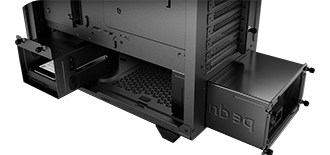

We tested a few non-stock configurations to determine which setup made the most sense when looking at CPU and GPU thermals more on that below. Because the 400C's PSU shroud has been shifted to the bottom, two top-mounted fans can be installed as optional add-ons or for large radiators. Stock cooling is simplified to a set of two fans, one 140mm and one 120mm, shooting a straight line of air from the front-top and out the back-top. The 400C ditches its larger counterpart's inverted motherboard layout, instead reverting to familiar territory and exposing the board to the left side. For that, Corsair's designed its more compact Carbide 400C.īut the 400C isn't totally without risk: It's ditching the 5.25” optical drive bays, something NZXT famously did with its H440 and carried on with the competing-class S340. But it's those same risks which increase the case's cost – new tooling often has that effect – and push some users away.

The case uses an inverted motherboard layout, something discussed extensively in our previous review, and reminds us of a select group of Cooling Elite in this regard. Corsair 400C Gaming Case SpecsĬorsair's 600C took risks. The 400Q is more-or-less the same case, just with the window removed and sound-damping material added. This review of the Corsair Carbide 400C benchmarks cooling performance for CPUs and GPUs, all accompanied by build quality and installation analysis.
400C CUSTOM PSU SHROUD SERIES
To allow for an enclosure more fitting of the “mid-tower” form factor, Corsair removed the 5.25” support in its new Carbide Series 400C & 400Q cases, shrinking the height from ~21 inches to ~18.27 inches. The 600C and 600Q cases instituted an inverted motherboard layout – rotating and flipping board installation such that the GPU is oriented “upside-down” – but stuck with tried-and-died optical drive support. Teased at CES 2016, Corsair's 400 C ($90) enclosure swiftly followed the chart-topping 600C, a case that dominated our GPU cooling charts.


 0 kommentar(er)
0 kommentar(er)
